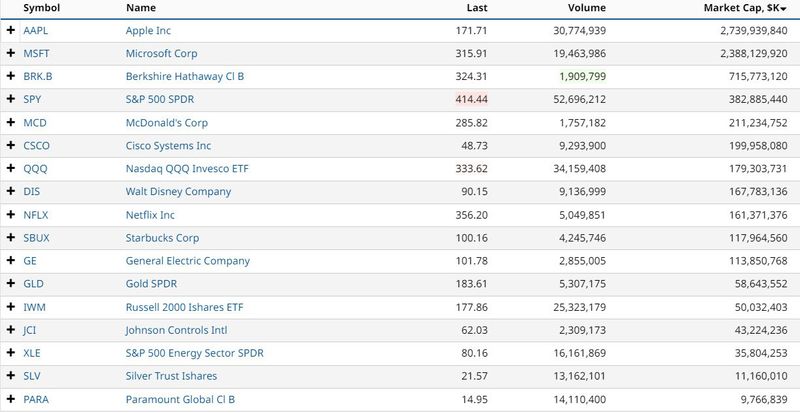Fractional shares: Slicing stock into bite-size pieces

Karl Montevirgen is a professional freelance writer who specializes in the fields of finance, cryptomarkets, content strategy, and the arts. Karl works with several organizations in the equities, futures, physical metals, and blockchain industries. He holds FINRA Series 3 and Series 34 licenses in addition to a dual MFA in critical studies/writing and music composition from the California Institute of the Arts.

Doug is a Chartered Alternative Investment Analyst who spent more than 20 years as a derivatives market maker and asset manager before “reincarnating” as a financial media professional a decade ago.
Before joining Britannica, Doug spent nearly six years managing content marketing projects for a dozen clients, including The Ticker Tape, TD Ameritrade’s market news and financial education site for retail investors. He has been a CAIA charter holder since 2006, and also held a Series 3 license during his years as a derivatives specialist.
Doug previously served as Regional Director for the Chicago region of PRMIA, the Professional Risk Managers’ International Association, and he also served as editor of Intelligent Risk, PRMIA’s quarterly member newsletter. He holds a BS from the University of Illinois at Urbana-Champaign and an MBA from Illinois Institute of Technology, Stuart School of Business.

Suppose you’re going on a picnic and you have just one basket to carry a few sandwiches, some beverages, and a huge watermelon. The watermelon’s too big. It won’t fit. But that won’t be a problem if you cut it up into smaller pieces, take only what you need, and pack it into a small container. It’s like you just transformed a large watermelon into fractional shares, allowing you to enjoy its flavor and nutrients in the park without having to carry and consume the entire thing. How easy was that?
In the world of investments, the concept of “fractional shares” is a recent innovation. Brokerages started offering fractional shares in the late 1990s and early 2000s. Even today, not all stock brokerages offer them.
Key Points
- Fractional shares democratize investing by allowing investors, regardless of their capital, access to securities that were once out of reach.
- With fractional shares, investors can diversify their investments without relying solely on funds.
- Despite their benefits, fractional shares do have limitations and risks that investors should understand.
What are fractional shares?
A fractional share is a unit of a stock, exchange-traded fund (ETF), or other security whose value is less than one full share.
Suppose a stock is priced at $1,000 per share, but your brokerage firm offers pieces for as little as $5 per share. If you purchase $50 worth of that stock, your fractional share is worth 5% of a full share.
As a fractional shareholder, your percentage of gains and losses is proportional to the amount of stock you own. If the stock rises by 1% (or $10 per full share), your investment would rise 5% of $10, or $0.05.
It all sounds a bit messy. So, what’s the appeal?
Why would an investor buy fractional shares?
- You’re no longer “priced out” of expensive stocks. As of May 2023, a share of Apple (AAPL) goes for about $170. Facebook parent Meta (META) is $245. Semiconductor giant Broadcom (AVGO)? Just under $700. And in the ETF space, a single share of the Invesco QQQ Trust (QQQ), which tracks the tech-heavy Nasdaq-100 Index (NDX), trades for $334. Many high-quality stocks and ETFs are priced in the hundreds, and even thousands, per share (see figure 1). Fractional share programs give all investors access to a much wider pool of potential investments, meaning that nobody gets priced out of expensive stocks.
- You can diversify more effectively. Suppose you’re just starting out and have only $100 to invest. Fractional shares allow you to spread this modest investment across a wide range of stocks—what the pros call diversification. With fractional shares, a small amount of capital can cast a wide net.
- You get greater investment flexibility. Before the advent of fractional shares, investing according to a predetermined sum, or “dollar-based investing,” wasn’t feasible for most investors because of the wide range of share prices. But fractional shares allow you to invest according to a set financial amount, providing unrestricted access to most stocks, despite their price differences. Plus, fractionals make it easier to invest over time. Want to buy $50 of a certain stock each month at whatever the prevailing price is at the time? That’s called dollar-cost averaging, and it’s a solid long-term strategy, made easier by fractional shares.

Are there any downsides to fractional shares?
Even if you’re buying only a portion of a full share, there are a few downsides and risks associated with fractional ownership.
- Not every brokerage offers fractional shares. If your broker doesn’t participate, you might need to shop around. And if you own fractions and wish to switch to another broker that doesn’t offer them, you’ll need to either liquidate your fractional shares or keep two accounts open.
- Tax complexity. Most brokers calculate capital gains and losses and track dividends for you, but not all of them. And mistakes do happen (occasionally). It can be a lot to follow come tax time.
- No proxy voting. Most companies grant voting rights to the holders of each share, but fractionals are typically set up with the broker as the actual “holder.” So as a fractional investor, you’ll have no voting rights. Sorry.
- Watch those fees! Over the last decade, commissions and fees have come down considerably, with most major brokers offering some sort of zero-commission structure. But not all fractional share schemes are truly fee-free. Considering the small size of fractional investments, even a nominal transaction charge can negate the gains.
How are brokerages able to pull this off?
In a nutshell, brokerages buy the full shares, slice them up, and parcel them out to customers.
This is similar to practices you’d find in other financial industries (like retail foreign exchange), where brokerages would aggregate customer orders, purchase enough of the asset to cover the orders, and then divide the parts accordingly.
Most brokerages offer fractional shares by dollar amount, with varying minimums.
Who might benefit most from fractional shares?
It could be any investor who has a need to buy less than a full share for any given stock.
- Beginners might find fractional shares to be a less intimidating way to get their feet wet in investing.
- Small investors who have limited capital but want access to high-priced stocks can benefit from these smaller slices.
- Investors who dollar-cost average or use automated robo-investing platforms will find it easier to match fractional shares to a fixed dollar amount.
- Diversification seekers will have an easier time accessing a wide pool of assets and indexes through fractional shares.
These are just a few examples of investor types who might benefit from investing in fractional shares. Again, if there’s any reason why you might need less than a full share for one or several financial instruments, it’s better to have that flexibility than not.
The bottom line
Fractional shares are helping pave the way for wider financial accessibility. That’s good news for most investors; they offer people a way to gain exposure to high-priced stocks, diversify their portfolios more effectively, and engage in dollar-based investing, all without needing substantial capital.
Fractional shares have limitations and risks. But as brokerages continue to adopt and refine this relatively new offering, the benefits for investors, especially beginners and small investors, are becoming increasingly clear. Much like taking a fraction of a watermelon to a picnic, fractional shares offer a way to partake in the full flavor of the market, but in manageable and affordable slices.
Specific companies and funds are mentioned in this article for educational purposes only and not as an endorsement.
- Fractional Share Investing—Buying a Slice Instead of the Whole Share | sec.gov
- Schwab Stock Slices | schwab.com